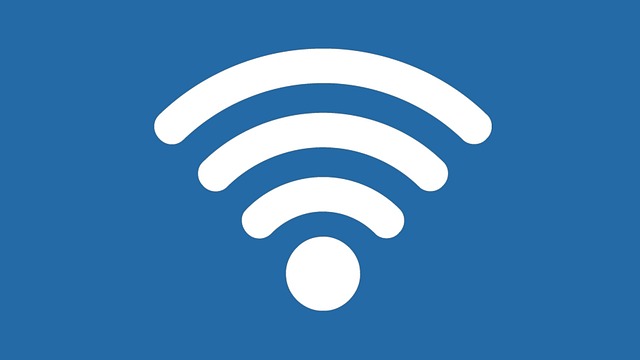Understanding roaming charges and how to avoid surprises
Roaming costs can turn a short trip into an unexpectedly expensive bill if you’re not prepared. This article explains the main drivers of roaming charges, how data, eSIMs, prepaid options, and hotspots change expenses, and practical steps to manage bandwidth, coverage, and security while traveling internationally.

Roaming charges come from how mobile operators route and bill your calls, texts, and data when you use networks outside your primary service area. Costs vary by destination, plan type, whether you use a physical SIM or an eSIM, and how you consume data—streaming and large downloads increase bandwidth usage and can multiply fees. This article breaks down the technical and commercial factors that influence roaming costs and offers practical tactics to reduce surprises while preserving connectivity and security.
What is roaming and how does it use data?
Roaming happens when your device connects to a foreign network operator because your home network has no direct coverage. Data roaming is billed differently than local data: some carriers charge per megabyte or gigabyte, others offer daily passes or region-based bundles. Even when roaming in a neighboring country, background app updates, push notifications, or automatic backups can consume unexpected bandwidth. Monitoring data use in settings, restricting background sync, and preferring Wi‑Fi for large transfers are simple ways to limit unexpected charges.
How do eSIM and SIM options affect roaming?
A physical SIM and an eSIM can change your roaming options. eSIMs allow installing local or regional profiles without swapping cards, making it easy to switch to a local prepaid plan that often offers better rates. A local physical SIM still provides the same benefit but requires a new card and sometimes ID verification. Some home carriers offer international roaming add-ons that keep your original number but cost more. Evaluate whether a short-term local/prepaid plan or a home-carrier pass fits your travel duration and usage patterns.
Can hotspots and bandwidth control costs?
Using your phone as a mobile hotspot or renting a dedicated pocket Wi‑Fi can affect costs both positively and negatively. Tethering with a local prepaid SIM or eSIM usually offers the most affordable bandwidth for multiple devices, while hotspot rental fees add a separate cost but may include generous data. Bandwidth-hungry activities—like video calls and streaming—consume large amounts of data; lower-resolution settings, scheduled downloads over Wi‑Fi, and browser data-saver modes reduce usage. Where possible, plan heavy transfers for known Wi‑Fi environments with secure connections.
How do coverage and latency affect roaming experience?
Coverage determines whether you can connect; latency influences responsiveness. In some destinations, your device may connect to slower or congested networks that increase page load times and interrupt real-time apps. Choosing a provider with broad regional agreements improves coverage and reduces repeated network switching that can trigger extra signaling costs. If low latency is critical for your work, test local carriers or use corporate VPN solutions designed for mobile performance to reduce lag and packet loss over roaming connections.
What security risks should you consider while roaming?
Roaming often means connecting to networks you don’t control, increasing exposure to threats like man-in-the-middle attacks and insecure public Wi‑Fi. Use a trusted VPN for sensitive transactions, enable device encryption, and keep software up to date. Be cautious when provisioning eSIM profiles: only install from reputable vendors or your carrier. When using public hotspots, prefer HTTPS sites and avoid accessing financial services on untrusted networks. Prepaid and roaming plans that include carrier-grade security features can also reduce risk.
Pricing and prepaid plan comparison
Real-world costs depend on pass types (daily vs monthly), per-GB rates, regional vs global packages, and whether you choose a local prepaid SIM, international pass from your home carrier, or an eSIM marketplace.
| Product/Service | Provider | Cost Estimation |
|---|---|---|
| T-Mobile International Pass | T-Mobile (US) | Approximately $5/day for daily international passes; regional differences apply |
| Vodafone Roaming Pass | Vodafone | Passes and regional bundles often range from about £1–£10/day or equivalent for short stays |
| Orange Holiday Europe SIM | Orange | Typical short-stay SIMs cost around €30–€40 with mid-range data allowances |
| Google Fi Flexible Plan | Google Fi | Data commonly billed near $10/GB for pay-as-you-go usage; plan options vary |
| Airalo eSIM (regional/global) | Airalo | eSIM plans start very low for tiny allowances and range up to $50+ for larger regional packages |
Prices, rates, or cost estimates mentioned in this article are based on the latest available information but may change over time. Independent research is advised before making financial decisions.
Conclusion Understanding roaming charges requires considering how data is routed, what billing model your carrier uses, and how you consume bandwidth while traveling. Comparing eSIMs, local prepaid SIMs, daily passes, and hotspot rentals against your expected usage and security needs helps reduce surprises. Regularly review plan details, monitor usage, and prefer secure Wi‑Fi for heavy transfers to manage costs and maintain reliable connectivity without unexpected bills.





